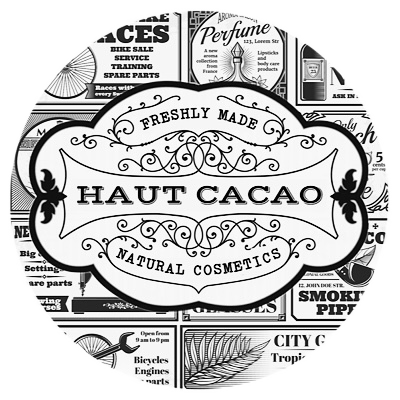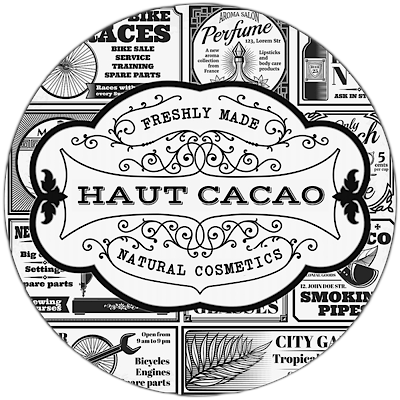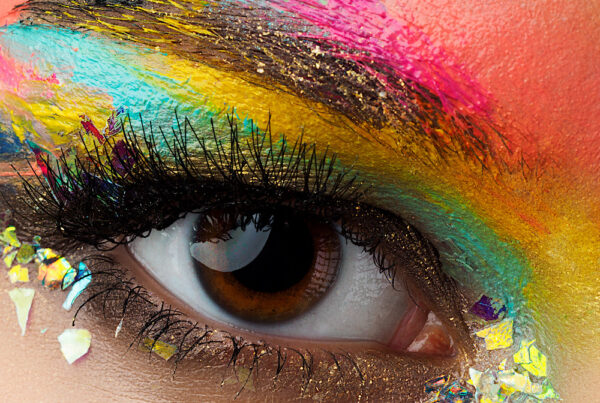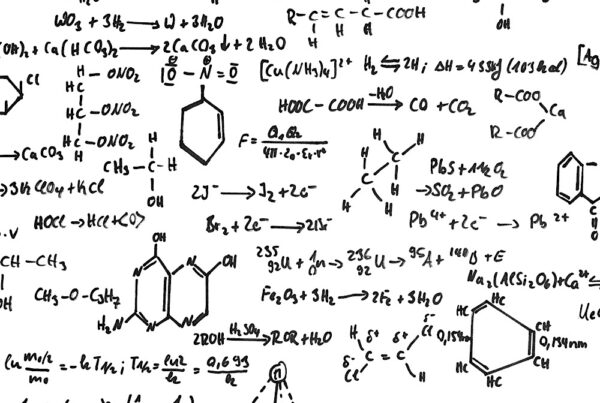I get a lot of questions about mica. Is it that bad? That all-too-familiar trend of a high-glow sheen on cheeks and down the bridge of nose is achieved with mica frosts. In this post I want to address in more detail why I have chosen to leave mica out of my products from a ‘healthiest skin’ point of view. I think the ethical part is now being better highlighted and the public has become educated about how child trafficking is closely linked to how mica is sourced. If you want to learn more about the ethics behind why I went mica-free please read my first blog post about it here.
beyond the ethical concerns
Before I learned about unethically sourced mica. You could say that mica was already something that was on my radar. I saw growing irritation in my own skin and when working with clients. Mica particles in makeup are so small, it’s potentially harmful for you to inhale the tiny mica particles over time. Construction workers who use mica wear masks when working with the mineral to prevent inhaling mica fragments into their lungs. Mica inhalation has been linked to coughing, weakness and weight loss, according to the Occupational Safety and Health Administration. I have never seen any makeup artists wearing masks while using mica in their makeup. This could frighten their clients away, I understand, but damage in the lungs over years could be cumulative – meaning little by little and building.
Titanium Dioxide and Mica are silicate minerals (sometimes referred to as silicates, which is not correct). Silicate minerals are, as beauty brands love to describe them, natural.
It means of course: they occur naturally – as in “aren’t man-made”, aren’t synthetic. And this is not a win by itself; many toxins are, in fact, natural. But yeah, it sounds good. Natural. Natural. In addition, EWG says it could or could not be bioaccumulative and yet Codecheck gives it a thumbs up claiming it’s anti-inflammatory.
Confused? Me too.
If you were to look at mica particles under a macro lense or microscope, they look like the photo above, very sharp shards or sheets of glass. The reason the particles catch the light and shimmer is because of the sharp edges. What do sharp edges also do? Cut. So this ingredient can create microscopic tears in the skin and cause redness and inflammation. The sensitivity usually is first noticed around the eyes because that is where the most mica is often applied. You can also see redness around the nose sometimes, depending on how much mica is in your foundation. Sometimes mica is coated in chemicals which can further irritate the skin, especially if it has been cut. Some coatings which are popular, especially with pressed shades are Magnesium Myristate (emulsifier, binder) or Perfluoroalkyl Phosphate (film former, binder) and Lauroyl Lysine (surfactant, binder).
TANTRUM
When your skin behaves like a 3-year-old — temperamental, cranky and unpredictable — putting your sensitive complexion in time-out just isn’t an option. Luckily there are more and more mica-free options out there so that is the first thing I would try to see – if the issue IS the mica. Even when I was in my twenties, I didn’t like how mica looked on my skin. I liked how it looked on my mature clients even less. From my point of view it does all the things you don’t want your makeup to do: it accentuates pores and scars, it makes eyes more crepey and dry-looking, bringing attention to fine lines, and physically drying out the surface of the skin. I like how skin looks right after a hydrating mask or facial treatment, intensely moisturized and plumped up. I have never been big on shimmer as I like the no-makeup makeup look. If mica works for you and you really like the effect, go for it. I always share with my clients what I have learned as a makeup artist as well as the chemistry of an ingredient. Keep in mind that serecite is another name for mica.
dimethicone
While I am sharing about my experience with very common makeup ingredients I will close this post with a couple more. Dimethicone has never appealed to me. I am surprised it is still in so many products and usually is one of the first five. The feeling I would get from Dimethicone is that it was suffocating my skin. You know that feeling when you get home and the first thing you want to do is wash your makeup off? I don’t believe the molecules are large enough to clog pores. However, it seems to trap oil, impurities, and bacteria between the skin and the layer of dimethicone applied which could lead to increased breakouts and blackheads.
more bad news on dimethicone
The coating action actually prevents the skin from performing its normal activities-like sweating, temperature regulating, sloughing off dead skin cells, etc. Prolonged exposure to dimethicone can actually increase skin irritation, due to the coating property and because dimethicone is listed as a possible skin and eye irritant. On top of all this, dimethicone is a non-biodegradable chemical-bad for the environment.
titianium dioxide
Alas, Titanium Dioxide causes just as much controversy as Talc(um), especially Titanium Dioxide nanoparticles. German scientists discovered that nanoparticles get into the body system through the lungs and that they remain in the body. French scientists proved that TD nanoparticles could be just as toxic as asbestos (a close relative of TD, by the way), accumulating in the lungs and causing lung irritation, inflammation and, ultimately, cancer.
too much td
Now, TD is widely used as a white pigment with high coverage, for example in dyes and paint, but most scientists consider this safe.
Also TD used in sunscreen for its UV-absorbent quality is considered “okay” for healthy skin as soon as it’s not nano-particles (but we remember that sunscreen is nothing to use carelessly, don’t we?). TD found in food (declared as E171) is “probably safe” because it’s “probably” not nano-sized. Isn’t that too much probability for your taste?
show your skin some old-fashioned love
I believe these above ingredients can exacerbate skin aging because all three have drying and skin-irritating properties. By using these ingredients you’re doing nothing to boost the health and vitality of the skin and they could be replaced with skin-loving, skin-nourishing clays, herbs, and fruits.. All three, in my opinion, tend to take away from your natural beauty because they create a cakey look throughout the day. i would have to conclude though that the biggest reasons for me to stay away from these ingredients are that I want to protect my eyes, lungs, and just overall health more than I want that brow bone shimmer.







